

55 Mexico Safety Tips & Important Travel Advice for 2024

The U.S. Department of State regularly cautions travel to Mexico due to safety concerns.
While incidents of petty theft, and violent crimes do happen – it varies greatly depending where you’re going.
By taking the below Mexico travel safety precautions and having the right gear, you will minimize the risk of anything going wrong and protect yourself in case of emergencies.

Mexico travel safety must-haves
1. use a concealable neck wallet to avoid pickpockets.
Pickpocketing and robbery are common in larger cities. Use a neck wallet to store all of your valuables in one place, including your phone, cash, credit cards, and important documents. It can be worn discretely under your shirt so you’re not flashing your wealth or having to pull out your wallet as often, which makes you less of a target. This one also has RFID-blocking technology so that e-thieves can’t steal your credit card details.

View on Amazon.com ➜
2. Get travel insurance for Mexico
Your domestic insurance provider does not cover you in foreign countries. Our friend had over $6,000 in medical bills when he broke both his wrists falling from a bike while traveling in Mexico; thankfully, this was completely covered by travel insurance, and he was able to focus on the more important task of getting well. In fact, travel insurance is now required for those visiting Puerta Vallarta, Riviera Nayarit, and other parts of Mexico.
Faye Travel Insurance is our go-to provider because they are the only company that makes claims super easy via their mobile app, which means you can be reimbursed quickly for common travel issues like theft, flight delays, baggage loss, trip cancelation, international hospital bills, or emergency evacuations. They even have coverage for vacation rentals and the option to “cancel for any reason.” With custom quotes for each person and trip, it’s too affordable to travel without. And it offers you tangible peace of mind even if nothing goes amiss.

Get a quote in less than 60 seconds with Faye ➜
3. Secure your valuables with luggage locks
Mexico requires TSA-approved luggage locks when entering and leaving the country. Luggage locks can be useful for a variety of purposes, like securing your checked luggage, carry-on bags, and backpacks in crowded areas where pickpockets are particularly stealthy. These combination locks are also great for lockers at hostels or tourist attractions.
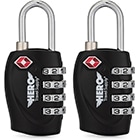
4. Thwart online hackers with a Virtual Private Network
Mexico is in the top 10 countries most affected by cybercrime in the world! According to an investigation by SurfShark , their cybercrime density is ranked very high and phishing is the most common form of attack. Your financial data, passwords, and private identity are not areas to take lightly. We learned this the hard way after my credit card number was stolen at (what I thought was a secure) Airbnb in Paris.
Not all connections are created equal, but a good VPN gives you a secure network when joining Wi-Fi in public areas like hotels, Airbnbs, cafes, restaurants, airports, and more. It will also limit any online censorship that can hinder you from being able to stream Netflix, use your PayPal account, and more. NordVPN is the fastest provider we’ve tried and offers 6,000 servers in 60 countries, which means there’s very little in the internet landscape that you won’t have access to. Once you try it, you’ll never go back!

View NordVPN.com Options ➜
5. Don’t drink tap water – bring a Grayl
The tap water in Mexico is definitely NOT safe to drink and can only be consumed if boiled. Even most locals will only drink properly filtered water or use plastic bottled water, which is bad for the environment and over time, can get costly. Bring this Grayl filtration system that will offer you autonomy over your water supply. It’s guaranteed to remove all pathogens including: rotavirus, norovirus, hepatitis, E. Coli, salmonella, dysentery, giardia, cryptosporidium, and amoebae. It also has the ability to filter particulates like heavy metals, pesticides, microplastics, and sediments. It’s a small investment to protect your health.
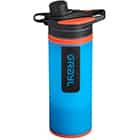
6. Avoid Montezuma’s revenge with activated charcoal
Sadly, it’s fairly common to get dysentery (Montezuma’s revenge) while traveling in Mexico. Since water, ice, or food can cause food poisoning, you’ll want to have a preventative plan to adjust to the local cuisine with activated charcoal. This supplement works as a magnet in your system to quickly absorb toxins and bacteria so that they can be expelled from your gastrointestinal tract. It will help mitigate any days and nights spent on the toilet so you can keep making the most of your trip (without the diarrhea, nausea, and distress!).
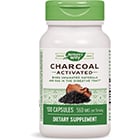
7. Keep your phone safe with this nifty waterproof pouch
Your phone is arguably your most important piece of safety equipment since you can easily make emergency calls and verify information etc. Therefore, you’ll want to keep it safe from water damage with a waterproof phone pouch when exploring cenotes, lounging by the pool, having a beach day, snorkeling, boating, and all the other water activities that come with a trip to Mexico. This universal pouch can be used up to 75ft underwater for epic photos and videos when swimming, snorkeling, or diving. Attach the case to a floating wrist strap so that you won’t lose your phone to the depths of the ocean if it goes overboard.

8. Wear these mosquito repelling wristbands to ward off disease carrying insects
Mosquito-borne illness is still prevalent in Mexico, including Zika and Dengue fever. Some less common conditions are Chikungunya, leishmaniasis, and Chagas disease. Pack smart with these mosquito-repellent wristbands – they are wearable and safe for kids, which is super useful for staying on-the-go with a reusable and waterproof option. In certain jungle-dense areas, you may want to double up with mosquito spray for full coverage (just check that it’s deet-free and non-toxic).
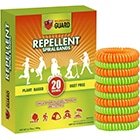
9. Use a well-reviewed tour guide to avoid scams & tourist traps
Instead of winging it with no plans – use a reputable platform so you’re always being guided by trustworthy hosts with thousands of reviews from fellow travelers. We use Get Your Guide because they offer the most authentic worldwide tours, often at a discounted rate compared to local services. This is also a way to meet new friends, so join a group tour instead of opting for private!
Some of the most popular tours include visiting the Mayan ruin of Chichén Itzá , taking a hot air balloon ride over the Teotihuacan Valley , cruising on a catamaran near Cancún , and experiencing the unique culture of Mexico City .

See all Mexico attractions at GetYourGuide.com ➜
10. Beat heatstroke with these cooling towels
The Mexican sun shines a little brighter! Being close to the equator makes the UV rays noticeably stronger, and on top of the humidity, you’ll want a sure way to beat the heat. This magical cooling towel is a game-changer! Simply add water, wring it out, and voila – you have a soothing towel that drops 20-30 degrees lower than the outside air temp for up to an hour! When you’re ready for more relief, just add more water. It’s perfect for beach days, afternoon hikes, Mayan ruin climbs, or outdoor adventures that can be a bit draining without this secret weapon.
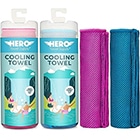
11. Luggage Straps
More than 26-million pieces of luggage were lost, delayed, or damaged in 2022. If you’ve seen the way bags are handled by airport and cruise staff, then you know the importance of luggage straps. These heavy-duty, adjustable belts reinforce your bag and take the pressure off your zippers by centralizing the weight. Able to support 700+ pounds of force tension, it’s a small security blanket that keeps everything from flying open and out onto the carousel!
My favorite bonus is that the bright colors help my bags to stand out at the arrivals terminal, so I can easily distinguish which cases are mine – rather than pushing in front of the crowds and checking every case that almost resembles mine. These straps also have a built-in identification card, so it’s less likely that someone will mistakenly take your bag, AND they’re TSA-friendly in case you’re selected for a random search.

Health & Hygiene Safety
1. get your gut ready with probiotics & electrolytes.
Before your travels, fortify your gut with probiotics and electrolytes. The probiotics will strengthen your digestive system and reduce sugars that pathogens love to feed on. If you do get food poisoning, the electrolytes will supercharge your water, helping to replace your body’s fluids so you don’t enter a state of dehydration. Avoid rich foods for 24-48 hours and eat bland things like apples, bananas, crackers, and toast until you’re feeling better. Just rest and let the charcoal do its thing.

2. Be selective with street vendors
With this in mind, be conscientious of the food choices you make. Avoid street food or open-air markets where the food looks badly stored. You will be looking for food that is on ice, heated, or preserved in a way that inhibits bacteria growth. If it seems like it’s been left out in the sun for hours, skip it. I also look for places with long lines and where the locals appear drawn to.
The sad thing is, my wife got food poisoning from a fancy Michelin-star restaurant once, so you really can get sick no matter how high the quality is. Use your discernment and it will reduce the likelihood of any sickness or nausea.
3. Don’t forget about the ice!
It’s obvious, yet not. While you’re doing the work to purify your water, don’t neglect to forgo the ice machine, which is usually made with the same contaminated water supply. This concept also applies to using purified water to brush your teeth. And keeping your mouth closed in the shower.

4. Wash raw fruits and vegetables
The same goes for washing your produce before consuming it. Use a ratio of 1 part vinegar to 3 parts water and soak your food for 3-5 minutes. Scrub off any griminess or dirt; it will go a long way to keeping your body healthy.
5. Ask your doctor about vaccinations before traveling
There are certain vaccination requirements to stay up-to-date on before traveling. For Mexico, the CDC advises vaccine protection against Hepatitis A, Hepatitis B, COVID-19, rabies, polio, measles, chickenpox, shingles, influenza, pneumonia, measles, meningitis, cholera, typhoid, and mumps.
6. Bring hand sanitizer
I always bring a compact bottle of hand sanitizer when I’m exploring in case of any sticky situations! Be sure to wash your hands regularly with soap, especially around meal times.

7. Know the local medical options
If you are in a medical emergency, know your local medical providers and the nearest clinic to your accommodation. If you are dehydrated, in an accident, or need to see a doctor, have your international health plan information on hand.
8. Opt for Reef-safe sunscreen (mandated in some areas)
In areas like Cozumel and the Riviera Maya (Cancun and Playa Del Carmen), it is actually required by law to use reef-friendly sunscreen that protects the nearby coral reefs. Pack a brand that is made with non-toxic products that won’t harm marine life or cause unfixable harm to underwater ecosystems.

Preventing Theft
1. don't fall for common tourist scams.
Since millions of newcomers visit Mexico each year, there are plenty of tourist-targeted scams that the locals use to pull-one-over on those that are less aware of common customs. Some scams to look out for are fake taxis, airport timeshare workers, higher dinner bills, fake alcohol, and laced substances. Avoid the cartels at all costs and choose vendors that look officially authorized. Read the reviews and do your research to find the most trustworthy restaurants and establishments.

2. Exercise caution at ATMS and banks
One of the many clever scams in Mexico is related to ATM machines. Be conscientious about using authentic machines that are attached to legitimate financial institutions. If you stumble across a random street ATM, it could easily have fake skimmers that process your credit card information when you swipe. You also may not even get your card back, or worse, it could be an area targeted by kidnappers or extortionists.
I also advise you to convert more cash to pesos early on so you do not have to make as many stops at the bank or any at all. Carry minimal amounts of cash with you at a time and leave the rest at your hotel, secured in the safe.
3. Don’t keep valuables in your pocket
As mentioned above, we recommend using an RFID-blocking neck wallet to ensure your essentials are out of your pocket where sticky fingers can easily grab them. Especially in crowded places like tourist attractions or public transit stations, the anti-RFID material will come in handy to prevent any modern e-thieves from scanning your credit cards or passport information. In the age where scan readers are becoming the norm, RFID protection is more necessary than ever.
4. Don’t wear flashy jewelry
In a place where crime and corruption do exist, it’s wise not to make yourself look like an auspicious target. Avoid drawing unnecessary attention to yourself by leaving the flashy jewelry at home. Even if it’s fake or costume jewelry, it can draw in curious eyes and hinder you from blending in as well as you should.
5. Document what you have with pictures and receipts
If you do decide to bring a few valuable items (like your phone, camera, laptop, or jewelry etc.), you should also take a picture of everything and keep your receipts. This way, if anything is taken, it will simplify the claims process through Faye Travel Insurance .
Faye covers up to $2,000 of any lost, stolen, or damaged luggage, including clothing, personal items, and professional equipment like a phone or laptop. This is another huge benefit of getting travel insurance and is the most common type of claim. Faye makes it super easy and fast to make claims through their mobile app. Having documentation will help you get reimbursed quickly for anything that does get lost, stolen, or damaged.
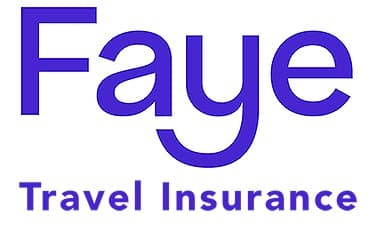
6. Be aware of major Mexican holidays
This is when cities will be at their busiest and crime at its highest. Some specific times to be aware of are:
- Semana Santa (7 days leading up to Easter)
- Cinco de Mayo (May 5th)
- Independence Day (September 15/16th)
- The Day of the Dead (November 1st and 2nd)
- Christmas (December 24/25th).
If visiting around these timeframes, don’t cancel any plans, just proceed with a bit more caution and heightened awareness of your surroundings.
7. Don’t try to be a knight in shining armor
You may hate this, but… If someone is robbing you, just give them the cash and hand over what they want. In most cases, you will not be harmed; they only want your valuables.
It is unlikely it will happen, but if it does, being cooperative can make all the difference. Do not try to be a hero, but rather, put your well-being ahead of material items that can be replaced.
Solo-Female Travel Safety
1. choose a safe city and neighborhood.
The single most important step you can take as a solo female traveler is to set yourself up for success in a safe area. Tourist areas are protected by the police because tourism is the largest economic driver in the country, so popular destinations will usually warrant lower crime rates – cities like Puerta Vallarta, Playa Del Carmen, Cabo San Lucas, Tulum, Sayulita, Mexico City, and Oaxaca City.
Note that some of the least safe cities that commonly see crime are Juarez, Tijuana, and Cuilacan. Whichever city you decide to visit, research the safest neighborhoods where you’ll have easy access to the main activities you are interested in.

2. Don’t walk alone at night
While it may seem like a common enough thing, walking alone at night can be like asking for trouble. It depends on the city and neighborhood you are staying in, but generally, it’s best to avoid walking long distances after 10 p.m., especially in isolated areas.
Be careful when immersing yourself in the Mexican nightlife, and know that the metro stops running at midnight. Regardless of your gender or group size, it’s smarter to opt for an authorized taxi or Uber. In fact, Uber is generally safer here than the taxi companies.
3. Cover your beverage while drinking
When traveling solo, you should be cautious not to overdrink. But if you have a cocktail or two, cover it with a disposable drink cover to make sure no one is slipping anything funny in your drink! You can’t keep an eye on your drink at all times, so this will add an extra layer of defense. Again, it’s not wise to get inebriated in a foreign country, particularly if you’re unfamiliar with the language.

4. Dress more conservatively in certain cities
In coastal towns, shorts are common and people will be wearing beach cover-ups as everyday attire. But this is not the case all over Mexico. You won’t typically see bare shoulders or legs in the more inland towns like Mexico City. Wearing long skirts or pants can help you to blend in and not look like a tacky tourist. This will also help you be less of a target to cat callers. If you are being harassed, ignore them and don’t indulge them.
Note that some temples and sacred sites may also require a more modest attire like a shawl wrapped around exposed arms as a sign of respect.
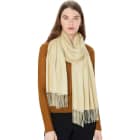
5. Share your location with loved ones
Someone should always know of your plans before you jet off to Mexico, so share a copy of your itinerary with family before you depart. Keep loved ones updated on any changes to your schedule so that if things go awry, people know your location at all times. You can use apps like Find My Friends to stay connected. But have contingency plans like itinerary sharing that is available offline.
6. Join Facebook meet-up groups
There is safety in numbers and you are far less likely to be bothered if you are surrounded by other people. Use this as an opportunity to meet new people and join a group. Facebook and other social platforms have great networking opportunities so you can connect with locals or other wanderlusters that are heading to Mexico. Like the “ New Friends Club of Mexico City .”
7. Take your license out, not your passport
When exploring the town or enjoying the vibrant nightlife, bring your domestic I.D. card and NOT your passport. It’s too risky. If you lose your passport, you will not be able to get home easily (at least not without an emergency trip to the local embassy or consulate). But if you lose the I.D. card, it can easily be replaced once you return home and it won’t cause any issues at airport security.
Don’t Forget These Other Items
1. quick-dry travel towel.
Another must-have for water-centered activities is a fast-drying travel towel. It’s made from super-soft microfiber that dries 10x faster than a standard cotton towel, meaning you won’t have to lug around a soggy, smelly towel all day. It comes with a compact carrying case that’s easy to throw into any daybag. It’s odor-resistant, sand-repelling, and comes in a variety of cute colors!

2. Lipstick-sized Portable Charger
We rely on our phones for boarding passes, directions, transportation, photos, and more when traveling, so it’s likely we’ll run out of battery before the day is over, which can really throw a wrench in your plans. Instead of going back to the hotel to recharge your phone midday, pack a lightweight, portable charger so you can keep your devices charged on the go!

3. Hanging Toiletry Bag
To seamlessly maintain your routine, you’ll need a hanging toiletry organizer that is spacious enough for all of your sunscreen, aloe, skincare, makeup, and hair products. After years of searching for the perfect bag, we’ve been blown away by this one! The 360-swivel hook makes it easy to hang anywhere, and the 4 large plastic compartments fit your beauty routine while containing any leaks that may happen during transit. Plus, the 3 external pockets are thoughtfully placed for easy access without having to unzip the whole thing.
Designed with love in Hawaii by Eco Sun, a company that strives to do more in the world, each sale gives back to women’s education in underserved communities. This company designs with sustainability in mind, and backs all of their products with a lifetime happiness guarantee. So you have nothing to lose and everything to gain!

4. Mesh Water Shoes
Prevent any slips or falls and keep your feet comfortable with a pair of mesh water shoes. The extra-grippy traction on the soles will keep you from slipping and getting hurt on wet boat decks, slippery waterfall hikes, or wobbly paddleboards. Plus, the mesh material actually allows your feet to breathe and dry quickly instead of getting waterlogged like a pair of tennis shoes would.

5. Beach Bag with Cooler
For pool, beach, and snorkeling days, a beach bag with a built-in cooler will carry all of your essentials like travel towels, cover-ups, and sunscreen, and the insulated bottom compartment will keep snacks and drinks cold! It’s waterproof, sandproof, and has nine pockets to keep things organized and easy to reach. It’s perfect to bring on any adventure because it’s lightweight and super easy to clean!

6. Windproof Travel Umbrella
The rainy season in Mexico is May-September so if you plan to visit during this time, an umbrella is essential. Afternoon showers are a daily occurrence, but luckily they usually don’t last long. Be prepared with an umbrella and expect rain anytime between 2-6 p.m. Packing a quality travel umbrella will make all the difference. This one is extremely sturdy, has a waterproof coating, and even comes with a lifetime replacement guarantee, so you can count on it for many trips to come!
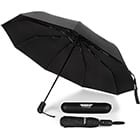
7. Motion Sickness Prevention
For winding roads and rocky boats, be sure to bring some form of motion sickness prevention. We prefer these natural patches over drugs like Dramamine because they don’t have the drowsy effect that leaves you feeling like a zombie when you should be busy having a blast. I’m super prone to motion sickness and these patches are the only ones that don’t leave me feeling green!
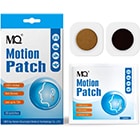
8. Packing Cubes
If you’re tired of living out of a disorganized suitcase when you’re on vacation, then you have to try packing cubes. You can have a cube designated for tops, bottoms, beachwear, eveningwear, whatever works for you! Each of these packing cubes has a thoughtful space for an index card so you can label what’s inside each one and not waste time digging through your whole luggage for that one tank top. This set even comes with two bonus laundry bags perfect for keeping dirty clothes or shoes separate.

9. Hangover Prevention
If you’ve had one too many piña coladas on the beach or margaritas by the pool, this hangover aid will save you a lot of headache (literally). The main reason you feel terrible after a night of drinking is because minerals are being depleted and your liver is overworked. These supplements contain essential vitamins and minerals and they support your liver to help your body detox the alcohol – leaving you feeling so much better the next morning. Cheers was featured on Shark Tank and is guaranteed to ease any hangover!

10. Luggage Straps
General mexico travel safety tips, 1. ensure your passport is up-to-date (make copies).
While Mexico only requires that you have a valid passport when visiting, the United States requires your passport to be valid for 6 months past your planned trip date. Make sure yours meets this requirement, and if not, be sure to renew it or apply for one at least 3 months before your trip so there’s plenty of time for it to arrive. Don’t forget to make copies of your passport in case it gets lost or stolen!
2. Enroll in the Smart Traveler Enrollment Program
For a newcomer or repeat visitor to Mexico, it’s advised to join STEP (Smart Traveler Enrollment Program) . This is a free service created by the Department of State for U.S. citizens who are venturing abroad. The program allows you to enter your whereabouts so the government knows your general location during your trip. This will make it easier in an emergency since the embassies and local consulates will be more informed on how and where to help you.
3. Consider staying at a resort
If you’re feeling extra cautious, consider staying at an all-inclusive resort that will be gated and safer. This is generally where people stay when visiting coastal cities because it’s considerably safer than staying in an unknown Airbnb. A resort can schedule secure taxis or private transfers, offer in-house dining so you don’t have to go out after dark and give you recommendations for safe areas to explore or tours to take.
4. Be aware of natural disaster protocols
Hurricanes are common along the coast, and earthquakes are prevalent across the country. Be sure to ask your hotel what the evacuation protocol is in case of a natural disaster. For example, in the case of an earthquake, you most likely will need to evacuate the building and look for official “meeting points” that are indicated with signs and painted on the streets and sidewalks outside.
5. Know your emergency phone numbers
In most large cities across Mexico, 9-1-1 is used in case of an emergency. If you’re driving on a highway and need emergency assistance, look out for signs that say a 3-digit number to call if you need help. Ambulances and first responders can also be reached at 066 and 080. In addition, it would be wise to save the phone number of your embassy and hotel in case you need to reach them in a dire situation.
Driving Safety
1. be aware of taxi scams.
The best way to avoid being ripped off by taxis is by booking a taxi through your hotel or a pre-paid taxi booth at the airport. However, when you need to hail a cab on the street, be sure to negotiate the price beforehand or have a general idea of how much the ride should cost, and make sure the meter starts from zero.
Another taxi scam, while very rare, is a thief poses as a taxi driver and holds the rider hostage until they hand over their valuables or withdraw money from an ATM. It’s important to never resist a robbery and hand over whatever cash or valuables you have.
Utilize authorized taxis because anything else is unregulated and illegal. Uber is another great option, and sometimes safer than the competitive nature of local taxi drivers.
2. Negotiate your taxi fair before the ride
To avoid being taken on a wild goose chase, ask your driver what the estimated ride rate will be prior to the journey. This prevents them from overcharging you or taking the long way.
Other scams to keep in mind are choosing an authorized taxi vehicle (it’s smart to have your resort call a local business on your behalf to request rides), or utilizing local ride-share apps like Uber and Cabify . And don’t let them convince you of the imaginary “airport tax” – it doesn’t exist!
3. Skip the rental car
The leading cause of tourist deaths in Mexico isn’t due to the cartel, gun violence, or kidnapping– it’s traffic accidents. If you’re not used to the way of driving in Mexico, it can be quite dangerous. Knowing the rules of the road and how the locals drive is extremely important for staying safe, but if you don’t want to risk and see if your driving skills are up to par, we recommend opting for public transport.
You can easily (and cheaply) get around all Mexican cities by using a taxi or Uber – meaning a rental car is unnecessary unless you want to drive yourself from one city to another.
4. If you do get a rental car, insure it
If you’re confident driving abroad, don’t make the mistake of being too confident and forgoing rental car insurance. Your personal auto insurance won’t cover your rental car in Mexico, but Faye’s Rental Car Care add-on will. It covers any damage to your rental (up to $50k) and even includes rental car theft coverage, which is a must for Mexico as car theft is a problem across the country (even in tourist hot spots).
With their easy-to-use mobile app, Faye offers 24/7 assistance so that you can make a claim and get reimbursed at any time, especially when you’re in a pinch (like if your vehicle breaks down). Everything from making claims to reimbursements is done straight from their app on your phone. Insurance with Faye is so much better and significantly cheaper than any insurance the rental agency will try and upsell you!

5. Don’t drive at night
Your chances of encountering crime while on the road significantly increase at night; don’t risk it. Thieves will intentionally set hazardous items like rocks or nails in the middle of the roads and highways at night, forcing you to stop where they can then catch you off-guard and rob you.
What is even more common and also very dangerous is running into animals on the road after dark. Cows, goats, sheep, and dogs are known to get loose and find themselves in the middle of a busy highway. You often can’t see them until it’s too late. Crashing into a full-grown bull at 60mph would be catastrophic.

6. Use toll roads when feasible
Toll roads are more secure and have fewer incidents of crime than freeways. The toll fees can add up, but your safety is not worth saving a few bucks. Plus, the toll fees go towards emergency roadside assistance in case you get into an accident. It doesn’t replace travel or car insurance, but it does help cover the cost of emergency first responders.
7. Don’t carry excessive amounts of cash
Military checkpoints, unofficial roadblocks, police stops, and even bandits are not uncommon occurrences on the road in Mexico. If you get stopped, they will likely want to search your car for drugs, weapons, and cash. If they find you have anything more than a few hundred dollars on you, they may want to question you further or even expect a bribe from you to let you go. Don’t risk having your cash stolen. Bring as little as possible. Keep some in your wallet and hide any extra out of sight.

Asher Fergusson
Update April 12, 2024
Information for u.s. citizens in the middle east.
- Travel Advisories |
- Contact Us |
- MyTravelGov |
Find U.S. Embassies & Consulates
Travel.state.gov, congressional liaison, special issuance agency, u.s. passports, international travel, intercountry adoption, international parental child abduction, records and authentications, popular links, travel advisories, mytravelgov, stay connected, legal resources, legal information, info for u.s. law enforcement, replace or certify documents.
Share this page:
Mexico Travel Advisory
Travel advisory august 22, 2023, mexico - see state summaries.
Reissued after periodic review with general security updates, and the removal of obsolete COVID-19 page links.
Country Summary: Violent crime – such as homicide, kidnapping, carjacking, and robbery – is widespread and common in Mexico. The U.S. government has limited ability to provide emergency services to U.S. citizens in many areas of Mexico, as travel by U.S. government employees to certain areas is prohibited or restricted. In many states, local emergency services are limited outside the state capital or major cities.
U.S. citizens are advised to adhere to restrictions on U.S. government employee travel. State-specific restrictions are included in the individual state advisories below. U.S. government employees may not travel between cities after dark, may not hail taxis on the street, and must rely on dispatched vehicles, including app-based services like Uber, and regulated taxi stands. U.S. government employees should avoid traveling alone, especially in remote areas. U.S. government employees may not drive from the U.S.-Mexico border to or from the interior parts of Mexico, except daytime travel within Baja California and between Nogales and Hermosillo on Mexican Federal Highway 15D, and between Nuevo Laredo and Monterrey on Highway 85D.
Read the country information page for additional information on travel to Mexico.
Do Not Travel To:
- Colima state due to crime and kidnapping .
- Guerrero state due to crime .
- Michoacan state due to crime and kidnapping .
- Sinaloa state due to crime and kidnapping
- Tamaulipas state due to crime and kidnapping.
- Zacatecas state due to crime and kidnapping .
Reconsider Travel To:
- Baja California state due to crime and kidnapping .
- Chihuahua state due to crime and kidnapping .
- Durango state due to crime .
- Guanajuato state due to crime and kidnapping .
- Jalisco state due to crime and kidnapping .
- Morelos state due to crime .
- Sonora state due to crime and kidnapping .
Exercise Increased Caution When Traveling To:
- Aguascalientes state due to crime .
- Baja California Sur state due to crime .
- Chiapas state due to crime .
- Coahuila state due to crime .
- Hidalgo state due to crime .
- Mexico City due to crime .
- Mexico State due to crime .
- Nayarit state due to crime.
- Nuevo Leon state due to crime and kidnapping .
- Oaxaca state due to crime .
- Puebla state due to crime and kidnapping .
- Queretaro state due to crime .
- Quintana Roo state due to crime .
- San Luis Potosi state due to crime and kidnapping .
- Tabasco state due to crime .
- Tlaxcala state due to crime .
- Veracruz state due to crime .
Exercise Normal Precautions When Traveling To:
- Campeche state
- Yucatan state
Visit our website for Travel to High-Risk Areas .
If you decide to travel to Mexico:
- Keep traveling companions and family back home informed of your travel plans. If separating from your travel group, send a friend your GPS location. If taking a taxi alone, take a photo of the taxi number and/or license plate and text it to a friend.
- Use toll roads when possible and avoid driving alone or at night. In many states, police presence and emergency services are extremely limited outside the state capital or major cities.
- Exercise increased caution when visiting local bars, nightclubs, and casinos.
- Do not display signs of wealth, such as wearing expensive watches or jewelry.
- Be extra vigilant when visiting banks or ATMs.
- Enroll in the Smart Traveler Enrollment Program (STEP) to receive Alerts and make it easier to locate you in an emergency.
- Follow the Department of State on Facebook and Twitter .
- Follow the U.S. Embassy on Facebook and Twitter .
- Review the Country Security Report for Mexico.
- Mariners planning travel to Mexico should check for U.S. maritime advisories and alerts , which include instructions on reporting suspicious activities and attacks to Mexican naval authorities.
- Prepare a contingency plan for emergency situations. Review the Traveler’s Checklist .
- Visit the CDC page for the latest travel health information related to your travel.
Aguascalientes state – Exercise Increased Caution
Exercise increased caution due to crime.
Criminal activity and violence may occur throughout the state.
There are no restrictions on travel for U.S. government employees in Aguascalientes state.
Baja California state – Reconsider Travel
Reconsider travel due to crime and kidnapping.
Transnational criminal organizations compete in the border area to establish narco-trafficking and human smuggling routes. Violent crime and gang activity are common. Travelers should remain on main highways and avoid remote locations. Of particular concern is the high number of homicides in the non-tourist areas of Tijuana. Most homicides appeared to be targeted; however, criminal organization assassinations and territorial disputes can result in bystanders being injured or killed. U.S. citizens and LPRs have been victims of kidnapping.
U.S. government employees must adhere to the noted restrictions:
- Mexicali Valley: U.S. government employees should avoid the Mexicali Valley due to the heightened possibility of violence between rival cartel factions. The boundaries of the restricted area are: to the east, the Baja California/Arizona and Baja California/Sonora borders; to the south, from La Ventana (on Highway 5) due east to the Colorado River; to the west, Highway 5; and to the north, Boulevard Lazaro Cardenas/Highway 92/Highway 1 to Carretera Aeropuerto, from the intersection of Highway 1 and Carretera Aeropuerto due north to the Baja California/California border, and from that point eastward along the Baja California/California border.
- Travelers may use Highways 2 and 2D to transit between Mexicali, Los Algodones, and San Luis Rio Colorado during daylight hours. Travelers may also use Highways 1 and 8 to transit to and from the Mexicali Airport during daylight hours. Travel on Highway 5 is permissible during daylight hours.
There are no other travel restrictions for U.S. government employees in Baja California state. These include high-traffic tourism areas of border and coastal communities, such as Tijuana , Ensenada , and Rosarito .
Baja California Sur state – Exercise Increased Caution
There are no restrictions on travel for U.S. government employees in Baja California Sur state.
Campeche state – Exercise Normal Precautions
Exercise normal precautions.
There are no restrictions on travel for U.S. government employees in Campeche state.
Chiapas state – Exercise Increased Caution
There are no restrictions on travel for U.S. government employees in Chiapas state.
Chihuahua state – Reconsider Travel
Violent crime and gang activity are common. Most homicides are targeted assassinations against members of criminal organizations. Battles for territory between criminal groups have resulted in violent crime in areas frequented by U.S. citizens and U.S. government employees, including restaurants and malls during daylight hours. Bystanders have been injured or killed in shooting incidents. U.S. citizens and LPRs have been victims of kidnapping.
U.S. government employee travel is limited to the following areas with the noted restrictions:
- Ciudad Juarez: U.S. government employees may travel to the area of Ciudad Juarez bounded to the east by Bulevar Independencia; to the south by De los Montes Urales/Avenida Manuel J Clouthier/Carretera de Juárez; to the west by Via Juan Gabriel/Avenida de los Insurgentes/Calle Miguel Ahumada/Francisco Javier Mina/Melchor Ocampo; and to the north by the U.S.-Mexico border. Direct travel to the Ciudad Juarez airport (officially called the Abraham González International Airport) and the factories located along Bulevar Independencia and Las Torres is permitted. Travel to San Jerónimo is permitted only through the United States via the Santa Teresa U.S. Port of Entry; travel via Anapra is prohibited.
U.S. government employees may only travel from Ciudad Juarez to the city of Chihuahua during daylight hours via Federal Highway 45, with stops permitted only at the Guardia Nacional División Caminos station, the Umbral del Milenio overlook area, the border inspection station at KM 35, and the shops and restaurants on Federal Highway 45 in the city of Ahumada.
- U.S. government employees may travel between Ciudad Juarez and Ascension via Highway 2.
- Nuevo Casas Grandes Area (including Nuevo Casas Grandes, Casas Grandes, Mata Ortiz, Colonia Juárez, Colonia LeBaron, Paquimé and San Buenaventura): U.S. government employees may travel to the Nuevo Casas Grandes area during daylight hours via Mexico Federal Highway 2, and subsequently Federal Highway 10, to Nuevo Casas Grandes. Employees are permitted to stay overnight in the cities of Nuevo Casas Grandes and Casas Grandes only.
- City of Chihuahua: U.S. government employees may travel at any time to the area of the city of Chihuahua bounded to the north by Avenida Transformación; to the east by Avenida Tecnológico/Manuel Gómez Morín/Highway 16/Blvd.José Fuentes Mares; to the west by the city boundary; and to the south by Periférico Francisco R. Almada.
- U.S. government employees may travel on Highways 45, 16, and 45D through the city of Chihuahua and to the Chihuahua airport (officially called the General Roberto Fierro Villalobos International Airport).
- U.S. government employees may travel to Santa Eulalia to the east of the city of Chihuahua, as well as to Juan Aldama via Highway 16 to the northeast.
- U.S. government employees may travel south of the city of Chihuahua on Highway 45 to the southern boundary of Parral, including each town directly connected to Highway 45, including Lázaro Cárdenas, Pedro Meoqui, Santa Cruz de Rosales, Delicias, Camargo, Ciudad Jiménez, and Parral itself.
- U.S. government employees may only travel on official business from the city of Chihuahua on Highway 16 to Ciudad Cuauhtémoc bounded by Highway 21 to the north and east, Highway 5 to the west, and Bulevar Jorge Castillo Cabrera to the south.
- Ojinaga: U.S. government employees must travel to Ojinaga via U.S. Highway 67 and enter through the U.S. Port of Entry in Presidio, Texas.
- Palomas: U.S. government employees may travel to Palomas via U.S. highways through the U.S. Port of Entry in Columbus, New Mexico, or via Highway 2 in Mexico.
U.S. government employees may not travel to other areas of Chihuahua, including Copper Canyon .
Coahuila state – Exercise Increased Caution
Violent crime and gang activity occur in parts of Coahuila state.
U.S. government employees must adhere to the following travel restrictions:
- Zaragoza, Morelos, Allende, Nava, Jimenez, Villa Union, Guerrero, and Hidalgo municipalities : U.S. government employees may not travel to these municipalities.
- Piedras Negras and Ciudad Acuña: U.S. government employees must travel directly from the United States and observe a curfew from midnight to 6:00 a.m. in both cities.
There are no other restrictions on travel for U.S. government employees in Coahuila state.
Colima state – Do Not Travel
Do not travel due to crime and kidnapping.
Violent crime and gang activity are widespread. Most homicides are targeted assassinations against members of criminal organizations. Shooting incidents between criminal groups have injured or killed bystanders. U.S. citizens and LPRs have been victims of kidnapping.
Travel for U.S. government employees is limited to the following areas with noted restrictions:
- Manzanillo: U.S. government employee travel is limited to the tourist and port areas of Manzanillo.
- Employees traveling to Manzanillo from Guadalajara must use Federal Toll Road 54D during daylight hours.
U.S. government employees may not travel to other areas of Colima state.
Durango state – Reconsider Travel
Reconsider travel due to crime.
Violent crime and gang activity are common in parts of Durango state.
- West and south of Federal Highway 45: U.S. government employees may not travel to this region of Durango state.
There are no other restrictions on travel for U.S. government employees in Durango state.
Guanajuato state – Reconsider Travel
Gang violence, often associated with the theft of petroleum and natural gas from the state oil company and other suppliers, occurs in Guanajuato, primarily in the south and central areas of the state. Of particular concern is the high number of murders in the southern region of the state associated with cartel-related violence. U.S. citizens and LPRs have been victims of kidnapping.
- Areas south of Federal Highway 45D: U.S. government employees may not travel to the area south of and including Federal Highway 45D, Celaya, Salamanca, and Irapuato.
There are no other restrictions on travel for U.S. government employees in Guanajuato state, which includes tourist areas in: San Miguel de Allende , Guanajuato City , and surrounding areas.
Guerrero state – Do Not Travel
Do not travel due to crime.
Crime and violence are widespread. Armed groups operate independently of the government in many areas of Guerrero. Members of these groups frequently maintain roadblocks and may use violence towards travelers. U.S. citizens and LPRs have been victims of kidnapping in previous years.
Travel for U.S. government employees is limited to the following area with the noted restrictions:
- Taxco: U.S. government employees must use Federal Highway 95D, which passes through Cuernavaca, Morelos, and stay within downtown tourist areas of Taxco. Employees may visit Grutas de Cacahuamilpa National Park during the day with a licensed tour operator.
U.S. government employees may not travel to other areas of the state of Guerrero, including to tourist areas in Acapulco , Zihuatanejo , and Ixtapa .
Hidalgo state – Exercise Increased Caution
There are no restrictions on travel for U.S. government employees in Hidalgo state.
Jalisco state – Reconsider Travel
Violent crime and gang activity are common in parts of Jalisco state. In Guadalajara, territorial battles between criminal groups take place in tourist areas. Shooting incidents between criminal groups have injured or killed innocent bystanders. U.S. citizens and LPRs have been victims of kidnapping.
- Jalisco-Michoacan border and Federal Highway 110: U.S. government employees may not travel to the area between Federal Highway 110 and the Jalisco-Michoacan border, nor travel on Federal Highway 110 between Tuxpan, Jalisco, and the Michoacan border.
- Federal Highway 80: U.S. government employees may not travel on Federal Highway 80 south of Cocula.
There are no other restrictions on travel for U.S government employees in Jalisco state which includes tourist areas in: Guadalajara Metropolitan Area , Puerto Vallarta (including neighboring Riviera Nayarit) , Chapala , and Ajijic .
Mexico City (Ciudad de Mexico) – Exercise Increased Caution
Both violent and non-violent crime occur throughout Mexico City. Use additional caution, particularly at night, outside of the frequented tourist areas where police and security patrol more routinely. Petty crime occurs frequently in both tourist and non-tourist areas.
There are no restrictions on travel for U.S. government employees in Mexico City.
Mexico State (Estado de Mexico) – Exercise Increased Caution
Both violent and non-violent crime occur throughout Mexico State. Use additional caution in areas outside of the frequented tourist areas, although petty crime occurs frequently in tourist areas as well.
There are no restrictions on travel for U.S. government employees in Mexico State.
Michoacan state – Do Not Travel
Do not travel due to crime and kidnapping.
Crime and violence are widespread in Michoacan state. U.S. citizens and LPRs have been victims of kidnapping.
Travel for U.S. government employees is limited to the following areas with the noted restrictions:
- Federal Highway 15D: U.S. government employees may travel on Federal Highway 15D to transit the state between Mexico City and Guadalajara.
- Morelia: U.S. government employees may travel by air and by land using Federal Highways 43 or 48D from Federal Highway 15D.
- Lazaro Cardenas: U.S. government employees must travel by air only and limit activities to the city center or port areas.
U.S. government employees may not travel to other areas of the state of Michoacan, including the portions of the Monarch Butterfly Reserve located in Michoacan.
Morelos state – Reconsider Travel
Violent crime and gang activity are common in parts of Morelos state.
There are no restrictions on travel for U.S. government employees in Morelos state.
Nayarit state – Exercise Increased Caution
Criminal activity and violence may occur throughout Nayarit state.
There are no restrictions on travel for U.S government employees in Nayarit state.
Nuevo Leon state – Exercise Increased Caution
Exercise increased caution due to crime and kidnapping.
Criminal activity and violence may occur throughout the state. U.S. citizens and LPRs have been victims of kidnapping.
There are no restrictions on travel for U.S. government employees in Nuevo Leon state.
Oaxaca state – Exercise Increased Caution
Criminal activity and violence occur throughout the state.
U.S. travelers are reminded that U.S. government employees must adhere to the following travel restrictions:
- Isthmus region: U.S. government employees may not travel to the area of Oaxaca bounded by Federal Highway 185D to the west, Federal Highway 190 to the north, and the Oaxaca-Chiapas border to the east. This includes the cities of Juchitan de Zaragoza, Salina Cruz, and San Blas Atempa.
- Federal Highway 200 northwest of Pinotepa: U.S. government employees may not use Federal Highway 200 between Pinotepa and the Oaxaca-Guerrero border.
There are no restrictions on travel for U.S. government employees to other parts of Oaxaca state, which include tourist areas in: Oaxaca City , Monte Alban , Puerto Escondido, and Huatulco .
Puebla state – Exercise Increased Caution
There are no restrictions on travel for U.S. government employees in Puebla state.
Queretaro state – Exercise Increased Caution
There are no restrictions on travel for U.S. government employees in Queretaro state.
Quintana Roo state – Exercise Increased Caution
Criminal activity and violence may occur in any location, at any time, including in popular tourist destinations. Travelers should maintain a high level of situational awareness, avoid areas where illicit activities occur, and promptly depart from potentially dangerous situations.
While not directed at tourists, shootings between rival gangs have injured innocent bystanders. Additionally, U.S. citizens have been the victims of both non-violent and violent crimes in tourist and non-tourist areas.
There are no restrictions on travel for U.S. government employees in Quintana Roo state. However, personnel are advised to exercise increased situational awareness after dark in downtown areas of Cancun, Tulum, and Playa del Carmen, and to remain in well-lit pedestrian streets and tourist zones.
San Luis Potosi state – Exercise Increased Caution
Criminal activity and violence may occur throughout the state. U.S. citizens and LPRs have been victims of kidnapping.
There are no restrictions on travel for U.S. government employees in San Luis Potosi state.
Sinaloa state – Do Not Travel
Violent crime is widespread. Criminal organizations are based in and operating in Sinaloa. U.S. citizens and LPRs have been victims of kidnapping.
- Mazatlan: U.S. government employees may travel to Mazatlan by air or sea only, are limited to the Zona Dorada and historic town center, and must travel via direct routes between these destinations and the airport and sea terminal.
- Los Mochis and Topolobampo: U.S. government employees may travel to Los Mochis and Topolobampo by air or sea only, are restricted to the city and the port, and must travel via direct routes between these destinations and the airport.
U.S. government employees may not travel to other areas of Sinaloa state.
Sonora state – Reconsider Travel
Sonora is a key location used by the international drug trade and human trafficking networks. Violent crime is widespread. U.S. citizens and LPRs have been victims of kidnapping. Travelers should maintain a heightened level of awareness of their surroundings in all their travels in Sonora. Security incidents may occur in any area of Sonora.
- Travel between Hermosillo and Nogales: U.S. government employees may travel between the U.S. Ports of Entry in Nogales and Hermosillo during daylight hours via Federal Highway 15 only. U.S. government employees may not use ANY taxi services, public buses, nor ride-share applications due to a lack of secure vetting and/or dispatching procedures. Travelers should exercise caution and avoid unnecessary stops as security incidents, including sporadic, armed carjackings, and shootings have been reported along this highway during daylight hours. Travelers should have a full tank of gas and inform friends or family members of their planned travel.
- Nogales: U.S. government employees may not travel in the triangular area north of Avenida Tecnologico, west of Bulevar Luis Donaldo Colosio (Periferico), nor east of Federal Highway 15D (Corredor Fiscal). U.S. government employees also may not travel in the residential and business areas to east of the railroad tracks along Plutarco Elias Calle (HWY 15) and Calle Ruiz Cortino, including the business area around the Morley pedestrian gate port-of-entry. U.S. government employees may not use ANY taxi services, public buses, nor ride-share applications in Nogales due to a lack of secure vetting and/or dispatching procedures and the danger of kidnapping and other violent crimes.
- Puerto Peñasco: U.S. government employees may travel between Puerto Peñasco and the Lukeville-Sonoyta U.S. Port of Entry during daylight hours via Federal Highway 8 only. They may not travel on any other route to Puerto Peñasco. U.S. government employees may not use ANY taxi services, public buses, nor ride-share applications in Puerto Peñasco. due to a lack of secure vetting and/or dispatching procedures and the danger of kidnapping and other violent crimes.
- Triangular region near Mariposa U.S. Port of Entry: U.S. government employees may not travel into or through the triangular region west of the Mariposa U.S. Port of Entry, east of Sonoyta, and north of Altar municipality.
- San Luis Rio Colorado, Cananea, and Agua Prieta : U.S. government employees may travel directly from the nearest U.S. Port of Entry to San Luis Rio Colorado, Cananea (via Douglas Port of Entry), and Agua Prieta, but may not go beyond the city limits. Travel is limited to daylight hours only. Travel between Nogales and Cananea via Imuris is not permitted. U.S. government employees may not use ANY taxi services, public buses, nor ride-share applications in these cities due to a lack of secure vetting and/or dispatching procedures and the danger of kidnapping and other violent crimes.
- Eastern and southern Sonora (including San Carlos Nuevo Guaymas and Alamos): U.S. government employees may not travel to areas of Sonora east of Federal Highway 17, the road between Moctezuma and Sahuaripa, and State Highway 20 between Sahuaripa and the intersection with Federal Highway 16. U.S. government employees may travel to San Carlos Nuevo Guaymas and Alamos; travel to Alamos is only permitted by air and within city limits. U.S. government employees may not travel to areas of Sonora south of Federal Highway 16 and east of Federal Highway 15 (south of Hermosillo), as well as all points south of Guaymas, including Empalme, Guaymas, Obregon, and Navojoa. U.S. government employees may not use ANY taxi services, public buses, nor ride-share applications in these areas due to a lack of secure vetting and/or dispatching procedures and the danger of kidnapping and other violent crimes.
U.S. government employees may travel to other parts of Sonora state in compliance with the above restrictions, including tourist areas in: Hermosillo , Bahia de Kino , and Puerto Penasco .
Tabasco state – Exercise Increased Caution
There are no restrictions on travel for U.S. government employees in Tabasco state.
Tamaulipas state – Do Not Travel
Organized crime activity – including gun battles, murder, armed robbery, carjacking, kidnapping, forced disappearances, extortion, and sexual assault – is common along the northern border and in Ciudad Victoria. Criminal groups target public and private passenger buses, as well as private automobiles traveling through Tamaulipas, often taking passengers and demanding ransom payments.
Heavily armed members of criminal groups often patrol areas of the state and operate with impunity particularly along the border region from Reynosa to Nuevo Laredo. In these areas, local law enforcement has limited capacity to respond to incidents of crime. Law enforcement capacity is greater in the tri-city area of Tampico, Ciudad Madero, and Altamira, which has a lower rate of violent criminal activity compared to the rest of the state.
U.S. citizens and LPRs have been victims of kidnapping.
- Matamoros and Nuevo Laredo: U.S. government employees may only travel within a limited radius around and between the U.S. Consulates in Nuevo Laredo and Matamoros, their homes, the respective U.S. Ports of Entry, and limited downtown sites, subject to an overnight curfew.
- Overland travel in Tamaulipas: U.S. government employees may not travel between cities in Tamaulipas using interior Mexican highways. Travel between Nuevo Laredo and Monterrey is limited to Federal Highway 85D during daylight hours with prior authorization.
U.S. government employees may not travel to other parts of Tamaulipas state.
Tlaxcala state – Exercise Increased Caution
There are no restrictions on travel for U.S. government employees in Tlaxcala state.
Veracruz state – Exercise Increased Caution
Violent crime and gang activity occur with increasing frequency in Veracruz, particularly in the center and south near Cordoba and Coatzacoalcos. While most gang-related violence is targeted, violence perpetrated by criminal organizations can affect bystanders. Impromptu roadblocks requiring payment to pass are common.
There are no restrictions on travel for U.S. government employees in Veracruz state.
Yucatan state – Exercise Normal Precautions
There are no restrictions on travel for U.S. government employees in Yucatan state, which include tourist areas in: Chichen Itza , Merida , Uxmal , and Valladolid .
Zacatecas state – Do Not Travel
Violent crime, extortion, and gang activity are widespread in Zacatecas state. U.S. citizens and LPRs have been victims of kidnapping.
- Zacatecas City : U.S. government employee travel is limited to Zacatecas City proper, and employees may not travel overland to Zacatecas City.
- U.S. government employees may not travel to other areas of Zacatecas state.
Travel Advisory Levels
Assistance for u.s. citizens, search for travel advisories, external link.
You are about to leave travel.state.gov for an external website that is not maintained by the U.S. Department of State.
Links to external websites are provided as a convenience and should not be construed as an endorsement by the U.S. Department of State of the views or products contained therein. If you wish to remain on travel.state.gov, click the "cancel" message.
You are about to visit:
Free webinar May 9: How to spot and stop a scam. Sign up now.
AARP daily Crossword Puzzle
Hotels with AARP discounts
Life Insurance
AARP Dental Insurance Plans
AARP MEMBERSHIP — $12 FOR YOUR FIRST YEAR WHEN YOU SIGN UP FOR AUTOMATIC RENEWAL
Get instant access to members-only products and hundreds of discounts, a free second membership, and a subscription to AARP the Magazine.
- right_container
Work & Jobs
Social Security
AARP en Español
- Membership & Benefits
- AARP Rewards
- AARP Rewards %{points}%
Conditions & Treatments
Drugs & Supplements
Health Care & Coverage
Health Benefits

Staying Fit
Your Personalized Guide to Fitness

AARP Hearing Center
Ways To Improve Your Hearing

Brain Health Resources
Tools and Explainers on Brain Health

A Retreat For Those Struggling
Scams & Fraud
Personal Finance
Money Benefits

View and Report Scams in Your Area

AARP Foundation Tax-Aide
Free Tax Preparation Assistance

AARP Money Map
Get Your Finances Back on Track

How to Protect What You Collect
Small Business
Age Discrimination

Flexible Work
Freelance Jobs You Can Do From Home

AARP Skills Builder
Online Courses to Boost Your Career

31 Great Ways to Boost Your Career

ON-DEMAND WEBINARS
Tips to Enhance Your Job Search

Get More out of Your Benefits

When to Start Taking Social Security

10 Top Social Security FAQs

Social Security Benefits Calculator

Medicare Made Easy
Original vs. Medicare Advantage

Enrollment Guide
Step-by-Step Tool for First-Timers

Prescription Drugs
9 Biggest Changes Under New Rx Law

Medicare FAQs
Quick Answers to Your Top Questions
Care at Home
Financial & Legal
Life Balance

LONG-TERM CARE
Understanding Basics of LTC Insurance

State Guides
Assistance and Services in Your Area

Prepare to Care Guides
How to Develop a Caregiving Plan

End of Life
How to Cope With Grief, Loss
Recently Played
Word & Trivia
Atari® & Retro
Members Only
Staying Sharp
Mobile Apps
More About Games

Right Again! Trivia

Right Again! Trivia – Sports

Atari® Video Games

Throwback Thursday Crossword
Travel Tips
Vacation Ideas
Destinations
Travel Benefits

Beach vacation ideas
Vacations for Sun and Fun

Plan Ahead for Tourist Taxes

AARP City Guide
Discover Seattle

25 Ways to Save on Your Vacation
Entertainment & Style
Family & Relationships
Personal Tech
Home & Living
Celebrities
Beauty & Style

TV for Grownups
Best Reality TV Shows for Grownups

Robert De Niro Reflects on His Life

Looking Back
50 World Changers Turning 50

Sex & Dating
Spice Up Your Love Life

Navigate All Kinds of Connections

Life & Home
Couple Creates Their Forever Home

Store Medical Records on Your Phone?

Maximize the Life of Your Phone Battery

Virtual Community Center
Join Free Tech Help Events

Create a Hygge Haven

Soups to Comfort Your Soul

Your Ultimate Guide to Mulching
Driver Safety
Maintenance & Safety
Trends & Technology

AARP Smart Guide
How to Keep Your Car Running

We Need To Talk
Assess Your Loved One's Driving Skills

AARP Smart Driver Course

Building Resilience in Difficult Times

Tips for Finding Your Calm

Weight Loss After 50 Challenge

Cautionary Tales of Today's Biggest Scams

7 Top Podcasts for Armchair Travelers

Jean Chatzky: ‘Closing the Savings Gap’

Quick Digest of Today's Top News

AARP Top Tips for Navigating Life

Get Moving With Our Workout Series
You are now leaving AARP.org and going to a website that is not operated by AARP. A different privacy policy and terms of service will apply.
Go to Series Main Page
12 Tips for Safe Travel in Mexico
Places to avoid, including acapulco, and other precautions to ensure a wonderful trip.

The image some may have of Mexico as a dangerous country with a drug cartel on every corner is far from the reality. Millions of U.S. citizens travel safely to Mexico each year, and the Mexican government puts a priority on making tourist areas secure.
Still, with the State Department urging travelers to “exercise increased caution” in the country due to crime, it’s a good idea to take some precautions to minimize your risk of encountering a problem.

AARP Membership — $12 for your first year when you sign up for Automatic Renewal
1. Choose your destination carefully
Though the State Department’s “increased caution,” or Level 2, travel advisory covers much of the country, it considers come areas, such as Guadalajara, more risky — Level 3 (“reconsider travel”).
And it suggests avoiding travel — Level 4 (“do not travel”) — in five Mexican states, including Guerrero, home to the Acapulco and Ixtapa tourist meccas.
The relatively low Level 2 advisory suggested for the rest of the country covers San Miguel de Allende; the Riviera Maya, including Playa del Carmen; and Cabo San Lucas in Baja California, where “petty crime occurs frequently in tourist areas.” Check travel.state.gov for the latest updates for every part of the country.
2. Register your trip with the State Department’s STEP (Smart Traveler Enrollment Program)
This allows you to receive updates on your destination and enables State Department personnel to locate you in case of an emergency. Also look up and keep handy the phone number for the nearest U.S. consulate before you go, in case you need help. Having travel insurance that covers medical emergencies, theft or other possible calamities is advisable.
3. If you’re an extremely cautious traveler, consider an all-inclusive resort or a cruise
In addition to having a single fee cover most of your vacation, all-inclusives typically allow only guests and employees inside a gated area. And cruise ships generally call at busy, well-guarded ports.
In 2017 and 2018, three dozen all-inclusive resorts in Mexico allegedly served tainted alcohol that sickened hundreds and killed at least several, according to a Milwaukee Journal Sentinel investigation. That issue appears to have been addressed, although it isn’t a bad idea to watch what you drink or stick to cans or bottled beverages opened in front of you.
ARTICLE CONTINUES AFTER ADVERTISEMENT
4. Think twice about renting a car
Driving can be risky in Mexico. It’s possible to be stopped by police demanding bribes, slangily called mordidas (“bites” in Spanish). And your auto insurance policy may not cover you there. Experts advise having a policy for your trip that includes uninsured motorists, as well as bail: If you’re involved in a crash, both drivers can be detained, and even jailed, until fault is determined. Also, it’s not smart to drive at night, because of the greater chance of robbery at a makeshift checkpoint, carjacking or collisions on dark roads.
AARP® Dental Insurance Plan administered by Delta Dental Insurance Company
Dental insurance plans for members and their families
5. Monitor what you eat and drink
Whether it’s the discomfort of “turista” diarrhea or more serious food poisoning, no one wants to spend vacation time in a bathroom or clinic. Rule 1 is not to drink water unless you’re sure it’s been filtered or purified (the same rule applies to ice). Water in a bottle with an unbroken seal is safest.
The U.S. Centers for Disease Control and Prevention (CDC) advises eating food that is cooked and served hot; avoid salads or raw vegetables that could have been rinsed in contaminated water or handled by someone who didn’t wash hands properly. It’s not a bad idea to stick to fruit you peel, such as bananas. Wash hands often or use hand sanitizer.
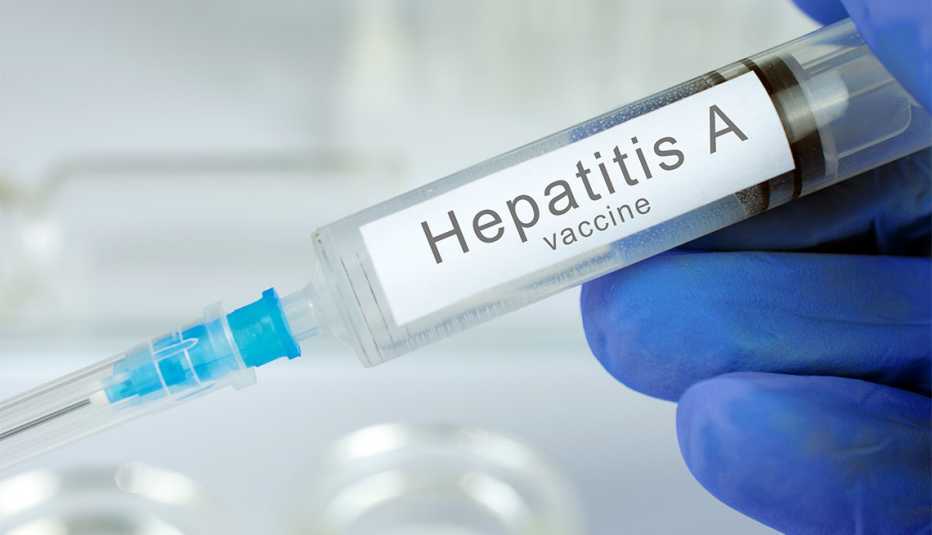
6. Get vaccinated and consider bringing medication
The CDC also advises getting hepatitis A vaccine to protect against the effects of contaminated food or drink, and suggests a typhoid vaccine, especially for adventurous eaters and those going to small cities or rural areas. Pack over-the-counter anti-diarrhea medicine. Savvy travelers also carry an antibiotic such as Cipro for debilitating bacterial attacks. If you get sick, stay hydrated to avoid hospitalization for IV treatment.
7. Pack a copy of your passport and credit cards
Or you can photograph them and save the images on your cellphone. Keep tabs on credit and debit card transactions so you can catch any fraudulent charges or withdrawals.
8. Bring more cash than you think you’ll need
Should you require emergency medical attention, it’s not unusual for a doctor or hospital to demand payment in cash. Though the peso is the official currency, dollars are often welcomed.
9. Leave the bling at home
Flaunting costly jewelry and watches is an invitation to be relieved of them.
10. Secure your valuables
Don’t leave anything valuable in your hotel room, unless it’s in a safe. This is a good rule of thumb no matter where you travel, but with poverty rife in Mexico, iPads and pricey headphones make tempting targets. And, of course, always stash your passport in your hotel’s safe (room or front desk).
11. Be careful when cabbing
Try to use only taxis that are official. If in doubt, ask a hotel or restaurant staffer to call one. Cabs aren’t always metered, so before you get into one, ask how much the trip will cost (hotel and restaurant staffers should be able to help if there’s a language barrier). Try bargaining if you feel the quoted fare is too high. Uber ride hailing, where available, generally is considered safe.
12. Don’t let tequila drown your judgment
Keep your wits about you. Don’t accept drinks from strangers, and be suspicious of unsolicited attempts to befriend you.
One final note: Keep these warnings in perspective. Mexicans in general are friendly and hospitable to Americans — even in the wake of friction between the two governments. “Everyone we’ve encountered has been welcoming,” says Wisconsin native Laura Bly, who lives part of the year in San Miguel de Allende and travels around the country. So take precautions, then clap along to a mariachi band or two and enjoy your stay.
Editor's note: This article was originally published on February 13, 2017. It was updated to reflect the current State Department recommendations for travel in Mexico.
More on travel
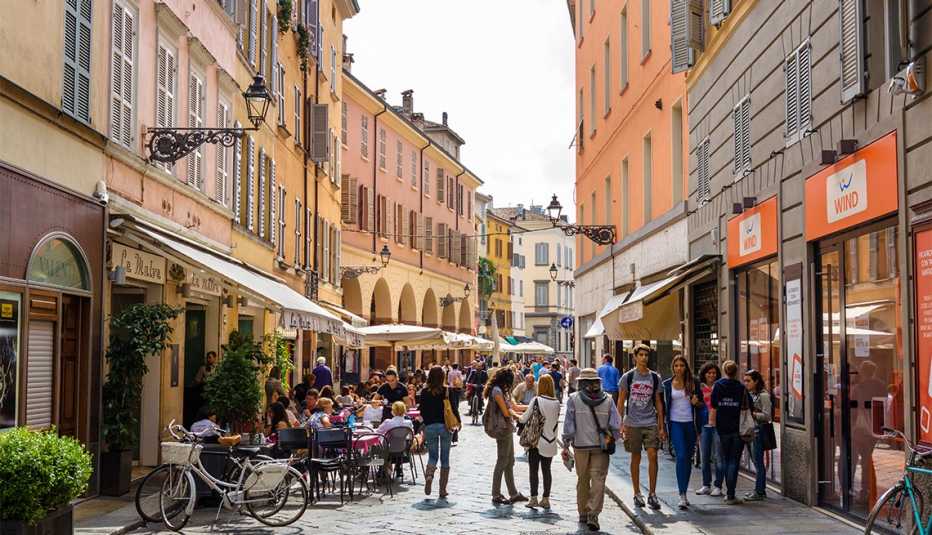
5 Italian Small-Town Gems
Enjoy these lovely, hassle-free Italian destinations beyond the crowded tourist hubs

8 Beach Towns Perfect for Fall Getaways

When and Where to See the Northern Lights
Or Call: 1-800-675-4318
Enter a valid from location
Enter a valid to location
Enter a valid departing date
Enter a valid returning date
Age of children:
Child under 2 must either sit in laps or in seats:
+ Add Another Flight
Enter a valid destination location
Enter a valid checking in date
Enter a valid checking out date
Occupants of Room
Occupants of Room 1:
Occupants of Room 2:
Occupants of Room 3:
Occupants of Room 4:
Occupants of Room 5:
Occupants of Room 6:
Occupants of Room 7:
Occupants of Room 8:
Enter a valid date
You didn't specify child's age
There are children in room 1 without an adult
You didn't specify child's age for room 1
There are children in room 2 without an adult
You didn't specify child's age in room 2
There are children in room 3 without an adult
You didn't specify child's age in room 3
There are children in room 4 without an adult
You didn't specify child's age in room 4
There are children in room 5 without an adult
You didn't specify child's age in room 5
You have more than 6 people total
Please select a trip duration less than 28 days
There must be at least 1 traveler (age 12+) for each infant in a lap
Enter a valid From location
Enter a valid start date
Enter a valid drop location
Enter a valid drop off date
Select a valid to location
Select a month
Enter a valid going to location
Enter a valid from date
Enter a valid to date
AARP VALUE &
MEMBER BENEFITS

Denny's
15% off dine-in and pickup orders

AARP Travel Center Powered by Expedia: Vacation Packages
$50 gift card of your choice when booking any flight package

$20 off a Walmart+ annual membership

AARP® Staying Sharp®
Activities, recipes, challenges and more with full access to AARP Staying Sharp®
SAVE MONEY WITH THESE LIMITED-TIME OFFERS
Before You Travel to Mexico
M Swiet Productions / Getty Images
Are you looking to plan your first trip to Mexico? There are several different aspects to consider before you go, from travel documents to health and safety concerns, and of course which destination to choose and what activities to pursue during your stay. Here are some resources to help you get your trip planned and figure out what you need, where you should go and what you should do, to help make your Mexico vacation a success.
General Info
Having some basic knowledge about Mexico before you go will help you make the most of your time there.
- Weather in Mexico
- Spanish Phrases
Your first consideration should be the timing of your trip. Your own schedule may be the determining factor, but you will want to take into account the weather in Mexico, any festivals or events that you'd like to attend, and whether it's high or low season.
- The Best Time to Visit Mexico
- Mexico Month-By-Month
Where to Go and What to Do
Choosing your destination and activities, and planning your itinerary can be one of the most fun aspects of preparing for your trip. The options are limitless. Do you want to get a tan on one of Mexico's gorgeous beaches , learn about history in one of its fascinating colonial cities , or let the good times roll at one of the country's vibrant fiestas?
- Top Destinations in Mexico
- One Week Itineraries
Passports, Travel Documents and Entry Requirements
Early in your travel planning, you should make sure you have all the necessary documents to travel to Mexico. Passports can take a few months to process so make sure you apply far enough in advance. You probably won't need to apply in advance for a visa: when you enter the country you will be given a tourist card.
- Passports and Travel Documents
- Tourist Cards for Mexico Travel
- Entry Requirements for Children
Money Matters
Find out how to manage your cash in Mexico, what you need to know about carrying money, exchange rates for the Mexican peso and other concerns about money for travel in Mexico.
- Mexican Money
- Mexico Tipping Guide
- Exchanging Currency in Mexico
- Exchanging Dollars to Pesos
- Tourist Tax Refunds
Mexico Travel Health Issues
Staying healthy is an essential factor in making sure you enjoy your time in Mexico. The main health problem that visitors to Mexico face is the dreaded Montezuma's Revenge, which is really just a fancy way to say traveler's diarrhea. There are some pretty simple precautions you can take to avoid having this problem, though.
- Avoiding Montezuma's Revenge
- Dengue Fever in Mexico
- Zika Virus in Mexico
Staying Safe in Mexico
There's been a lot of brouhaha recently about safety in Mexico and a lot of people are worried that Mexico is too dangerous, but most of Mexico remains safe to visit. You can improve your chances of staying safe while traveling in Mexico by following thse tips.
- Travel Safety Tips
- Spring Break Safety
Getting Around Mexico
If you're planning a short getaway you may just go to one destination and stay there the whole time, but if you have a bit more time and are hoping to see more of Mexico, you'll have to deal with transportation. Getting around Mexico can be a challenge, but it's worth it to experience more of what the country has to offer.
- Transportation Options in Mexico
- Bus Travel in Mexico
- Air Travel in Mexico
- Driving in Mexico
- Taking Authorized Taxis
Top 9 Mexico Travel Myths Debunked
Is It Safe in Mexico?
Mexico Travel Dos and Don'ts
What Documents Do I Need for Mexico Travel?
Driving in Mexico: What You Need to Know
What to Pack for Mexico
Before You Go Backpacking in Europe
What to Know About Visiting Mexico During Spring Break
Tijuana, Mexico Visitor's Guide
Your Trip to Mexico City: The Complete Guide
Fall in Mexico: Weather and Event Guide
Where to Go for Spring Break in Mexico
Rocky Point: A Complete Guide
Vital Information for the First-Time Visitor to Thailand
Is It Safe in Jamaica?
Los Cabos Guide: Planning Your Trip
You can also search using these:
Discover Mexico A-Z

- News & Offers
- Mexico Guides
- Mexico Features
- Free eBooks
- Free Guides
Travel Experiences
Trip planning, travel destinations, destination highlights, mexico lifestyles, living & lifestyle, lifestyle planning, real estate, healthcare & wellbeing, leisure assistance, lifestyle assistance, insurance coverages, property assistance, about mexperience, mexico essentials, discover more, safety in mexico: situational updates and practical tips.
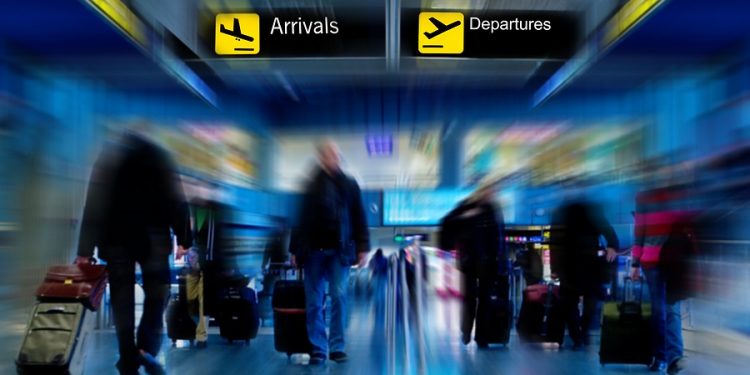
This guide to safety in Mexico provides situational updates and practical advice for visitors to, and foreign residents living in, Mexico
Keep abreast about safety issues in Mexico with our guide which offers practical and sensible advice based on currently-reported situations.
Last Updated: December 2021
See Also: Travel Health in Mexico
Safety in Mexico: current situations
Drug-related violence.
Turf wars between major Mexican drug cartels vying for control of trade routes to U.S. as well Mexican narcotic retail markets can spark waves of drug-related violence in some areas of Mexico and, during flare-ups, this creates a flow of dramatic news headlines. This type of violence tends to be concentrated in specific areas while other regions remain virtually unaffected .
Government consulates are advising travelers to exercise caution when traveling in northern states of Baja California, Chihuahua, Sinaloa, Sonora, Coahuila, Nuevo León, Tamaulipas, Tampico, Durango, Zacatecas where drug-related flare-ups continue to be prevalent on occasions.
It’s worth noting that popular tourist centers in affected states are usually safe to visit: for examples, Mazatlán in the state of Sinaloa; Morelia, Patzcuaro and the Monarch Butterfly sanctuaries in the state of Michoacán; and Taxco, Acapulco and Ixtapa-Zihuatanejo in the state of Guerrero.
Proportional perspective
Most of the violence is played out between drug gangs in only a small fraction of Mexico’s 2,438 Municipalities with foreign residents and tourists by-and-large unaffected .
Visitors to Mexico
Mexico continues to be one of the most visited countries in the world and the US-Mexico border is the world’s busiest and most transited land border in the world.
The majority of visits to Mexico pass-by trouble-free and the violence brought about by the ongoing drug cartel activity has left tourists, foreign business visitors and foreign residents mostly unaffected.
Violent crime in Mexico
Violent crime committed against visitors and foreign residents is rare in Mexico. Petty crime, e.g. pick-pocketing and bag grabbing, can be an issue in some areas; see section below on Petty Crime in Mexico for details. Common sense and being alert to your surroundings will minimize any risks.
Published statistics
Notwithstanding the media headlines which sometimes have a tendency to portray Mexico in a less-than-ideal light, published statistics and shared experiences from foreign residents and visitors demonstrate that most of Mexico remains a relatively safe place for tourists, visitors, business travelers, and foreign residents.
See also: 6 Reasons Why Mexico Is Safer Than You Think
Drug-related violence in Mexico
The drug-related violence that began a few years ago continues to attract news headlines nationally and internationally during event flare-ups.
It is estimated that 9 out of every 10 homicides committed in Mexico comprise of gang members fighting each other in the violent drug-turf disputes taking place.
Most of the violence currently happening in Mexico is concentrated in small areas of the country. Although news stories have a tendency to present drug-violence as a “Mexico wide” issue, studies have shown that the majority of homicides take place in a small fraction of the country’s 2,438 municipalities.
Places Affected
Of late, waves of drug-related violence flare-ups have been in the states of Chihuahua, Sinaloa, Sonora, Coahuila, Nuevo Leon, Tamaulipas, Durango, Baja California, Zacatecas in the north of the country. Not all areas in all these states are affected and popular tourist places are generally safe to visit, but caution should be exercised on your travels in these states to minimize any risks .
Sensible safety precautions
Taxi travel: only use authorized “ Sitio ” (taxi ranks) in Mexico City— avoid hailing a taxi from the street in the capital, or use a tele-cab or use internet-cab service like Uber or Cabify for your taxi rides. See the complete guide to Traveling by Taxi Mexico for full details.
Dress down: don’t walk around dripping gold or wearing clothes and jewelry which might bring undue attention to you or others with you.
Beware of scammers: scams and scammers targeted at tourists and foreign residents appear to be on the increase. See “Avoiding Scams” below.
Cash machines (ATMs): a void withdrawing cash from ATMs at night; be vigilant when you are withdrawing cash; use ATMs in well-populated areas or inside shopping malls. See “Cash and Valuables” below.
Bank-card cloning / skimming: bank card (Debit or Credit Cards) cloning (or skimming) is an issue in Mexico. Never leave bank cards out of your sight. If your card has a “chip and pin” ask waiters at bars and restaurants to bring the payment terminal to your table and cover your hand as you enter your PIN. If the terminal is not portable, or your card does not have “chip and pin” technology, take your card to the cashier to pay: do not allow attendants to take it out of your sight . If you are paying for fuel at gas stations with a card, we recommend you only use a credit card (not a debit card) and be extra vigilant as gasoline stations are rife with skimmers .
Mexico City’s bus terminals: Mexico City’s bus terminals are situated in less than ideal neighborhoods of the capital; however, the terminals themselves are safe , you just have to look out for potential pick-pockets and scammers who may approach you. See Also: Traveling by bus in Mexico
Pickpockets: every city in the world has its organized gangs of pickpockets; be alert especially in crowded places which are prime territory for pick-pockets and bag-snatchers; exercise extra vigilance at bus stations, on the Mexico City metro, at airports, busy shopping precincts, concerts, festivals, etc.
Active and extreme sports safety in Mexico
Active outdoor activities including ‘extreme sports’ are becoming popular travel experiences. We recommend readers check suppliers carefully and ensure that any extreme sports operators they use are properly qualified, insured and that the equipment they use is up-to-date and adequate . Reports of injury and death have been reported by foreign consulates whose nationals have partaken in extreme sports using operators that did not meet good quality or safety standards.
Sports and aquatic equipment: take additional care when hiring local services involving sports aquatic equipment in Mexico, especially SCUBA diving, parasailing and jet skis. With SCUBA Diving, ensure that the firm your are dealing with is fully qualified, certified, established, and has a good reputation locally.
Parasailing and jet-ski caution: some parasailing units move from beach to beach, selling services to people sunbathing and relaxing on the sands. Beware, as they may not be safe. Some hotels are beginning to warn-off their guests from these services due to previous accidents. Ask locally for advice and check the reputation of the supplier(s) —also ask locally if you are unsure about any jet-ski rental outfits.
Mexico business traveler safety
Despite the recent media coverage of drug-related violence, businesses continue to operate as normal in Mexico and thousands of foreign business travelers arrive to and depart from Mexico safely every day. Here are some sensible precautions if you are traveling on business in Mexico:
Business equipment: Don’t leave expensive business equipment (e.g. laptops, smart phones, cameras, etc.) unattended at any time. Computers and smart phones are particularly interesting to opportunist thieves as they are easy to port and very easy to sell-on.
Briefcases are sometimes targeted by opportunist thieves as they know they may port valuable equipment, wallets, etc. Be extra vigilant when you are traveling with a briefcase or consider using instead a satchel or other bag that is less obviously a “business accessory.”
Taxi cab travel: We recommend that you always use taxi cab ranks, App-cabs (like Uber or Cabify) or hotel cabs when using taxis in Mexico. See Traveling by Taxi Mexico .
Backup data: Backup your important data online (‘in the cloud’ is best) or at least keep key data on a separate disc/memory chip left away from your belongings. This is salient advice whether you are traveling in Mexico or anywhere else with your business equipment and important data.
Keeping cash and valuables safe in Mexico
Here are some key tips to keep your money and valuables safe in Mexico:
Withdrawing cash: Use ATMs in daylight hours and choose ATMs located in areas where there are plenty of other people around, or use ATMs situated inside shopping malls.
Carrying cash: Don’t carry large amounts of cash on your person. If you see something you want to buy and you don’t have the cash, a small deposit will always secure the item . Leave excess cash credit/debit cards you don’t expect to need at the hotel.
Bank-card cloning / skimming: Bank card (Debit or Credit Cards) cloning (or skimming) is an issue in Mexico. Never leave bank cards out of your sight. If your card has a “chip and pin” ask waiters at bars and restaurants to bring the payment terminal to your table and cover your hand as you enter your PIN. If the terminal is not portable, or your card does not have “chip and pin” technology, take your card to the cashier to pay: do not allow attendants to take it out of your sight . If you are paying for fuel at gas stations with a card, we recommend you only use a credit card (not a debit card) and be extra vigilant as gasoline stations are rife with skimmers .
Valuable documents: Keep your valuable travel documents (especially your passport) safe; passport theft is one the rise world-wide, including in Mexico . Store cash and other valuables in your hotel room’s safe or at the hotel’s safety deposit box.
Dress down: avoid walking around dripping jewelry, showing-off expensive watches, and other expensive fashion items.
ATM refills: When stand-alone ATMs are being re-filled, you might see armed guards surrounding it. We recommend you find another ATM instead of waiting around for it to be filled: it can take up to an hour for a machine to be re-filled and tested before it becomes operational again.
See Also: Money Safety in Mexico
Petty crime in Mexico
Pick-pockets, bag-snatchers and opportunist thieves operate everywhere, and especially in crowded places. Here are some tips to avoid becoming a victim of petty crime in Mexico:
Transport terminals: Bus stations and airports always have pick-pockets operating. Be alert and keep your valuables close to you. Mexico’s authorities are deploying additional security personnel at bus stations and airports to mitigate petty-criminal activity, but pick-pockets continue to cause upset, nonetheless.
Pick-pockets: Pick-pockets and bag snatchers also operate on local buses and microbuses , and at some tourist sites and museums, as well as busy local markets. Keep personal items to a minimum when your are touring, and carry only small amounts of cash.
Long distance buses: If you are traveling by bus over long distances, we recommend your use only first and executive class buses as second class buses are more susceptible to petty crime. Read our extensive guide to Bus Travel in Mexico for more details about security on long distance buses.
Metro metro trains and metro buses: If you are traveling a Metro system in Mexico keep your wallet, mobile phone, etc. out of sight and well secured, especially during rush-hour when these transport systems are most crowded.
Passport safety: There appears to have been a rise in passport thefts of late. Don’t carry your passport on your person when you’re visiting or touring unless you have specific reason for doing so, e.g. identification for money exchange. Most good quality hotels today offer in-room safety deposit boxes which you can use to store your valuable documentation, or a safety deposit box at the front desk.
Money exchange: Exchange money and use ATMs only in daylight hours and in areas frequented by others. See also Money in Mexico .
Scams and scam artists in Mexico
Be mindful of potential scams
Scam artists operate worldwide and Mexico is not immune from them. There have been reports of some scams aimed at foreigners; we’ve detailed these below. Exercise caution if someone unexpectedly approaches you.
Fake surveys: Some scammers pose as survey agents, and proceed to ask you personal questions , including your name, address and phone numbers. The questions are posed in such a way that you don’t necessarily realize what you are revealing. They may try to use this information to compromise your identity or wrongly inform your family back home that you are in trouble (extortion). Never divulge any personal information to strangers.
Fake officials: Be wary of any “official” that approaches you unexpectedly and asks you to pay fines or official fees, or insisting that you must go somewhere you had not planned: never accompany a stranger unexpectedly in this way.
Confidence tricksters: Exercise caution if strangers approach you for “financial help,” however well-dressed they may be, and however convincing their story may sound. Some tricksters use dramatic emotional blackmail to try and get you to give them some money or do their bidding. Never go someplace, nor board a vehicle (car, taxi, metro etc.) you did not intend to.
Fake immigration officers: There have been reports of scammers posing as immigration officers, especially at some Mexican airports. Tourists needing to replace lost tourist cards are usually targeted in the scam. If you need immigration assistance, or are in doubt about your immigration documents, go directly to the official immigration kiosk or office and do not deal with anyone who may approach you claiming to be an immigration officer.
Food and drink, bars: Don’t accept any food or drink from strangers . If any food samples are offered to you in the street or away from somewhere you’d expect to be offered a food sample, e.g. a reputable market or fair, refuse. If you are out at busy bar or night clubs, always keep your beverage with you —leave it with a trusted friend if you have to leave it unattended e.g. when you use the restroom.
Fake rides: Only use official taxis in Mexico City. When you phone a cab in Mexico, the receptionist will quote you the license plate number of the vehicle going to fetch you—check it matches. NEVER accept a ride from unofficial operators at airports or bus stations. When you arrive from your flight, buy a taxi ticket from one of the official kiosks, use a Uber of Cabify service, or book your airport transfer in advance and follow the ‘meet and greet’ instructions they give you.
Money transfer scams: Foreign residents and some tourists might get encouraged to transfer funds to Mexican or foreign bank accounts to fund “investment opportunities”. Exercise extreme caution . If you are purchasing real estate in Mexico do so only using a qualified lawyer and through a Notary Public .
Safety on Mexico’s roads
Driving a car is a great way to see Mexico. Mexico has an extensive and well-developed road network and traveling by road in Mexico is generally safe. Read our extensive Guide to Driving in Mexico for full details including safety advice.
Government travel advice web sites
In addition to our local contacts, we monitor government web sites, as local consulates have extensive local intelligence networks and first-hand reports of safety and crime issues experienced by foreign nationals in Mexico. Here are the links to the U.S., Canadian, British and Australian travel advisory sites:
- U.S. State Department
- Canadian Foreign Affairs Office
- British Foreign Office
Mexico in your inbox
Our free newsletter about Mexico brings you a monthly round-up of recently published stories and opportunities, as well as gems from our archives.
Safety in Mexico
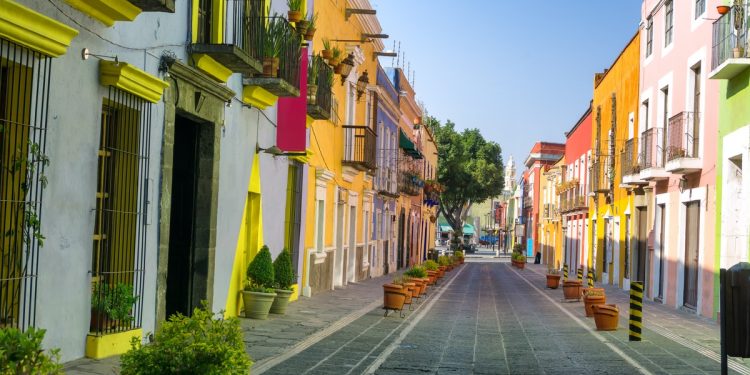
6 Reasons Why Mexico is Safer than You Think
These things don't make headlines, but they are the real-life experiences of people visiting and living safely in Mexico
Mexico Travel Health

Mexico Travel Health Guide
Guide to staying well and healthy while you visit and travel in Mexico, as well as how to access...

Mexico Essentials Guide
The guide for the essential things you need to know as you make your plans for travel, lifestyle and...
Please SAVE the PDF for your personal use.
Download again
My File Downloaded - Close this box
Should travelers worry about being kidnapped in Mexico? Travel experts discuss safety in Mexico.

The high-profile case of four U.S. citizens being kidnapped in Mexico sent shock waves through the nation. Two were killed last week after getting caught in the crossfire of cartel violence in the border city of Matamoros.
Many are wondering what's next for the popular tourist destination, and whether Mexico is safe for travel.
The four Americans – one woman and two men from South Carolina – crossed the southern border for cosmetic surgery last Friday when a cartel shootout erupted.
Social media videos show the gunmen pulling the Americans from their car and driving away, all during daylight. Mexican officials announced Tuesday that they had found two dead. the other The two survivors were escorted back to the U.S.
Is it safe to take a taxi in Cancun?: Here are the safest ways to get around, per travel agents.
Learn more: Best travel insurance
With 2 Americans dead in Matamoros: A cartel-scarred Mexican border town wonders what's next
Violence around border cities is not unusual and can involve Mexicans or migrants with little public attention, but it typically doesn't involve Americans. Officials said the abduction was probably a case of mistaken identity , but the FBI is investigating further.
Meanwhile, questions arose on how the Mexican and U.S. governments will respond, which could affect regular travel to Mexico. A heavy-handed response could likely mean "a wave of violence where it gets worse before it gets better," said Michael Ballard, director of intelligence at Global Guardian , a firm that specializes in travel security.
Currently, the travel advisory for Mexico warns Americans of crime and kidnapping. On Tuesday, White House press Secretary Karine Jean-Pierre said the State Department takes it "seriously" when it comes to providing "clear, timely, and reliable information about every country in the world ... so they can make informed travel decisions."
Is Mexico safe to travel to?
In 2021, nearly 29 million American travelers headed down to Mexico. That same year, about 75 American citizens died by homicide in Mexico, according to the most recent U.S. State Department statistics.
Mexico is "a tricky place" when it comes to travel and safety because "the security landscape and the security dynamic is so different state to state and city to city," according to Ballard.
Unlike some other countries, Mexico's travel advisory assesses each state individually.
The agency issued a "do not travel to" warning for the Colima, Guerrero, Michoacan, Sinaloa, Tamaulipas and Zacatecas state because of violent crime.
"You probably don't want to go to one of these border cities" because cartels "contest these ports of entry pretty heavily and fight for their economic control," Ballard said.
When it comes to the "do not travel to warning," Jean-Pierre said, "We've been very clear about that. The State Department, again, has put that out. We urge Americans to read these alerts before traveling."
Popular tourist spots like Quintana Roo, Nayarit and Mexico City have warnings of "exercised increased caution when traveling to" and Jalisco, where Puerto Vallarta is, has a "reconsider travel to." Travelers can "exercise normal precautions" when traveling to Yucatan, which includes the popular attraction Chichén Itzá.
How likely is it to encounter cartel violence?
"I don’t think anyone can ensure 100% clearance on (avoiding cartel violence), unfortunately. We know that Mexico has been plagued by drug violence, and cartels are in many parts of the country, just as in other nations," said Vanessa Karel, a Latinx entrepreneur who founded Greether , a travel startup that helps women travel with fewer risks.
"However, it is well documented that some areas have a higher presence of violence. Please do your due diligence on which areas these are," she said. Steer clear of these areas and avoid taking part in anything drug-related, Karel advised.
Ballard agreed and offered this analogy: "Getting struck by lightning is a really rare occurrence, but if you are standing on top of a tree in a thunderstorm, those odds go up. That's how I view being in and around some of these higher-risk cities in Mexico, the border cities."
Getting caught in cartel activity is less common somewhere like Cancun than it is in Colima.
Because Mexico's economy heavily depends on tourism dollars, cartels "tend to stay away from harming or hurting Americans because they know the response would be pretty severe," Ballard said.
The Mexican government has also implemented several initiatives to maintain safety in high-tourist areas, like deploying tourist police forces to high-traffic visitor areas. These officers are easy to spot and usually speak English.
"Travelers will have fewer risks by staying at highly rated hotels, areas and booking tour guides to show them around," Karel said.
Should people be worried about being kidnapped in Mexico?
Being "in the wrong place at the wrong time" is the main risk for Americans and cartel activity, Ballard said. It's rare for Americans to be kidnapped by cartels for ransom.
He does warn of occasional "express kidnappings," which happen not just in Mexico but in other countries too. In this situation, a tourist who is likely drunk and wandering around downtown gets kidnapped, driven around to ATMs and forced to withdraw money. Usually, they end up being let go.
As long as you stay in resort areas and use common sense, it should be relatively easy to keep safe.
Check out USA TODAY's 17 travel safety tips from the CIA .
What should you do if you witness or encounter cartel crime?
If you do witness or encounter cartel crime such as an express kidnapping or carjacking, Ballard said, you should report the case to the U.S. Embassy or to the local equivalent of 911. "You definitely want to have a record of something like that out there." Unfortunately, response times can be slow depending on where you are, he said.
According to the State Department , if something happens, you'll probably be relying on local resources.
Global Guardian clients, he pointed out, have a 24/7 panic button on the Global Guardian app, which will connect users to a safe haven, like a hospital.
In some cases, he said, your response depends on the situation, and it may be best to cooperate.
Top safety tips
Karel's top rule for traveling to Mexico is "to plan on going to places that are designed for you to go. If you are trying to visit an area that not even locals feel comfortable going to, don't attempt it, and please, simply avoid it," she said.
She also advised people to have situational awareness. "We are concerned that travelers going to Mexico think they can go just about anywhere, especially when they don’t blend as a local," she said. Visitors "should be aware of how much they stand out and how little or how much they know about the area they are going to."
Here are some other safety tips when traveling in Mexico:
- Travel during daylight hours and avoid walking around unknown areas, especially at night.
- Don't walk around with jewelry or your head down looking at your phone because that makes you an easy target to get robbed, Ballard said.
- "Please ask trustworthy travel businesses and, most importantly, check travel advisories and what the tourism boards say. T they are there for a reason, and a lot of us are fighting to make cities safer and more sustainable," Karel said.
- Enroll in the Smart Traveler Enrollment Program , a free service for U.S. travelers to receive safety alerts about their destination from the U.S. Embassy in real time.
- Before departing on your trip to a high-risk area, the State Department recommended you share important documents and points of contact with someone at home, and create a communication plan if something were to happen.
- Share your location via your smartphone with someone at home while you are abroad.
- Consider purchasing travel insurance for kidnapping or ransom. Depending on the plan, it can cover ransom payments, emergency evacuation costs, and payment for any negotiations needed.
Contributing: Michael Collins, USA TODAY
Kathleen Wong is a travel reporter for USA TODAY based in Hawaii. You can reach her at [email protected].

IMAGES